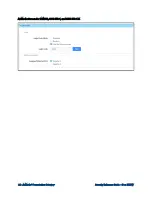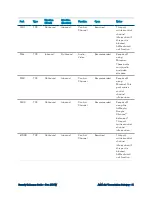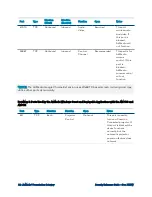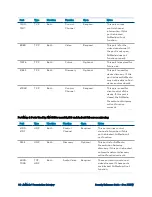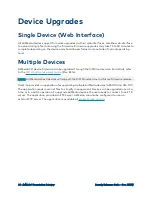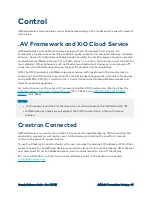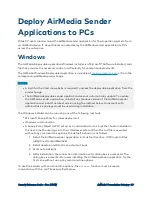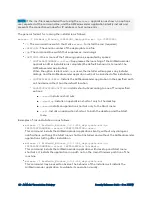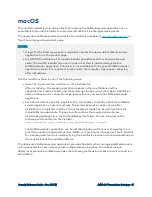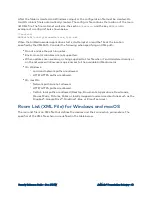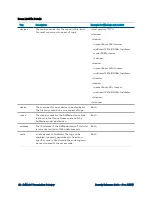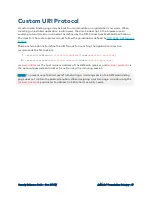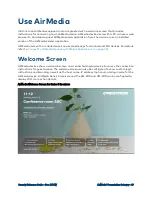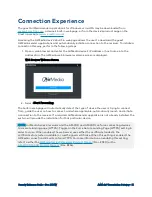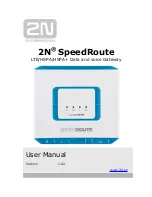
Security Reference Guide — Doc. 7693W
AirMedia® Presentation Gateway • 37
Control
AirMedia devices have multiple control options depending on the model and the specific needs of
its location.
.AV Framework and XiO Cloud Service
AirMedia Series 3 and AirMedia 2.0 devices support .AV Framework functionality. .AV
Framework provides a web interface to define inputs, outputs, and connected devices' standard
behavior. Some of configurable settings include the ability to add Zūm space occupancy sensors
and switches (AirMedia 2.0 only), TS- or TSW- series 7 in. or 10 in. touch screens, and controls for
room displays. Other behaviors, such as scheduling a display device’s power-on and power-off
times, are also definable depending on the specific product and its capabilities.
With the XiO Cloud service, AirMedia devices provision settings stored in the cloud across an
enterprise. The XiO Cloud service is also the central license management mechanism for devices
such as DMPS3, CCS-UC-1, and CCS-UC-1-X which have transferrable AirMedia licenses and
allow for seamless upgrades.
For instructions on configuring .AV Framework and the XiO Cloud service, refer to either the
AirMedia Series 3 Receivers Product Manual
(Doc. 9020) or the
(Doc. 8254).
NOTES:
l
.AV Framework and the XiO Cloud service are not available on the AM-100 or AM-101.
l
AirMedia Series 3 receivers will support the XiO Cloud service in a future firmware
release.
Crestron Connected
AirMedia devices can control any Crestron Connected compatible display. When launching the
application, a power on command is sent to the display, eliminating the need for a remote
control or the press of a power button.
To use the Crestron Connected feature, the user provides the display's IP address or IP ID. When
a user connects to the AirMedia device, a command is issued to turn on the display. After the last
user disconnects from the AirMedia device, a command is issued to turn off the display.
For more information on Crestron Connected devices, refer to the Crestron Connected


